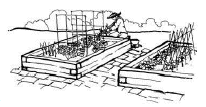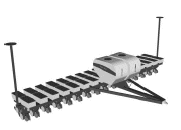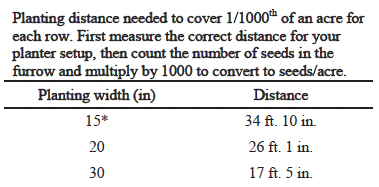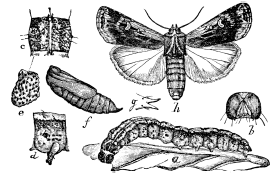

To send a message to an author, click on the author's name at the end of the article.
This Month in Ag Connection | Ag Connection - Other Issues Online
Agritourism can be defined as the intersection of tourism and agriculture. It may include visits to working farms, ranches, wineries and agricultural industries. Agritourism offers a variety of entertainment, education, relaxation, outdoor adventures, shopping and dining experiences. It is one of the fastest growing areas of the tourism industry. Agritourism offers a chance for smaller farms to stay competitive, increase income, and to be passionate about the industry. The drawbacks include increased liability, more interaction with the public (could be a positive or negative depending on your personality), and infringement on family time during off hours.
Sources of income from agritourism may include:
If considering an agritourism enterprise, some preparation is needed. A written business plan communicates with key people the purpose and details of the business, and is necessary to secure financing. As part of the plan development, research may be needed to learn more about the enterprise and competition.
Some of the specific items addressed in the plan should include a market analysis, required business licenses, insurance coverage, sales tax application, financial analysis, and business structure. Employee considerations include amount of labor needed, type of skills needed, benefits, and payroll taxes.
Once the business plan is completed, startup considerations include:
If one has the passion for agritourism, an experience others will pay for, within a reasonable driving distance and have a business plan, then an agritourism business may have potential.
Source: Darla Campbell, Ag Business Specialist
This Month in Ag Connection | Ag Connection - Other Issues Online
Seeds of warm-season vegetables should be started in mid-March for planting in May. Use grow lights or other bright light sources for growing seedlings. Poor light will result in spindly plants. By the end of March, decide which cool-season vegetables to plant and start preparing the garden or containers for planting. Clear off plant debris from the garden and incorporate 2-4 inches of compost or decomposed manure into the soil. Cool-season crops such as lettuce, spinach, broccoli, cabbage and kale can be planted the last week of March through the second week of April which allows for harvest in mid to late May before the heat of summer. Carrots, sugar snap peas, beets, cauliflower, Brussels sprouts, cabbage, potatoes and any other cool-season vegetable should be planted by mid-April in northeast Missouri. Be prepared to cover plants with row cover or some other type of protection if temperatures dip below freezing, although these plants can tolerate a light frost.
Delay planting the vegetable garden if the soil is too wet. Working wet soil can cause compaction. If the soil is dry enough for planting, go ahead and work it up and plant cool-season vegetables. Homeowners often have wood ash to dispose of this time of the year. Wood ash is safe to apply to vegetable gardens. If used sparingly it can be beneficial. Due to the fine particle size it reacts rapidly and blends completely with the soil. One of the major benefits of ash is as a liming agent in the soil. Wood ash also supplies nutrients to the crop. It is important to spread ash evenly over the garden. It is also a good idea to know the soil's pH before adding ash. Wood ash can raise the pH above the ideal soil pH for vegetables which is between 6.0-6.8.

Fruit trees and small fruit plants like grapevines, brambles and blueberries should be pruned while still dormant. Prune out dead, diseased or broken branches and branches crossing or rubbing against one another. Prune trees to develop a strong framework and allow for good light penetration and air circulation which is important to minimize disease. Take off tree wraps used for winter protection. If left on, they can harbor disease organisms and insects, causing the bark to become soft, leading to other issues. Dormant oil can be applied now for control of scale insects, mites and aphids. Do not apply oil during freezing weather. This can cause the emulsion to break down and produce uneven coverage. Do not apply oil if the tree is wet or rain is likely. March is the time to recall what pests were a problem the previous season and take steps in controlling them. For example, peach leaf curl is a common fungal disease of peach and nectarine trees appearing in May. It causes leaves to curl, pucker and even turn a pinkish-red. For control, apply a fungicide containing chlorothalonil to the trees before bud swell in late winter or early spring. Do not remove mulch from strawberries too soon. Late spring freezes can kill strawberry crowns. Early April is usually the best time to remove mulch from strawberry beds.
After months of dealing with winter weather, crocus, daffodils, snowdrops, hyacinths and many other spring flowers make their appearance in the landscape by the end of March. Pansies, snapdragons, dianthus and ornamental cabbage are annual flowers available at garden centers and local greenhouses in early spring. They are cold-tolerant and can take light frosts and even a little snow. Plant them in flower beds or containers at the end of the month. For more information on gardening, contact your local University of Missouri Extension center.
Source: Jennifer Schutter, Horticulture Specialist
This Month in Ag Connection | Ag Connection - Other Issues Online
With today's planter monitors, keeping tabs on planter performance is easier than ever before. Though physically double-checking planter operation during the season can maximize performance, the following is a list of items to be checked.

Planter Levelness
An improperly-leveled planter can inhibit the action of the row unit's parallel-bar linkage, potentially leading to non-uniform seeding depth. Check this while the planter is stopped and engaged in the soil. The planter's tongue and the row units' parallel-bar linkages should be nearly level (parallel) with the ground. Symptoms of an unlevel planter can include inconsistent seed spacing and depth. A severely unlevel planter may have difficulty closing the seed furrow.
Down Force
Many planters have springs or air bags in the parallel-bar linkage. These devices transfer weight from the planter's frame to the row unit to help disk opener and residue clearing/cutting coulter (if equipped) penetrate the soil and minimize unit bounce in rough conditions. Row unit down force should be adjusted when adding or removing row unit attachments, if there is a significant change in soil conditions (texture, moisture, tillage) or if the row units are bouncing when planting. Pay particular attention to row units following tractor tire tracks as they may require additional down force. Too little down force can result in row unit bounce and, subsequently, shallow seed placement. However, too much down force could accelerate wear on the row units' ground-engaging components and could negatively affect early plant development.
Row Cleaners (if equipped)
Row cleaners, trash wheels, or trash whippers are designed to sweep residue out of the path of the opener and, as such, must be adjusted to just touch the ground. Row cleaners adjusted too high will not rotate and will leave residue in the path of the opener. Adjusted too low and they may move too much soil which could affect seeding depth and cause the seed to be planted in cool, damp soil. Long residue can wrap around the row cleaners. In this case, a lead coulter may be needed to cut the residue before it can be moved out of the way by the row cleaner.
Tire Pressure
On planters ground-driven by pneumatic tires, tire pressure should be checked daily. The tires need to be properly inflated to ensure an accurate seeding rate. An under-inflated tire will reduce the gear reduction of the drive leading to a higher seeding rate. The opposite is true for an over-inflated tire.
Checking Seed Population
To check population, pick a couple of row units to monitor for a repeated measurement. Release the closing wheel down force and use a chain or strap to restrain the closing wheels so they do not touch the ground. Plant long enough so the planter is at operating speed and allows a distance to ensure the observed population will be representative of the rest of the field.
Next, measure the length of the row representing 1/1000th of an acre. Use the table below to determine how far to measure for a specific planter setup. After measuring the correct distance corresponding to 1/1000th of an acre, count the number of seeds found in that distance. To find the population, simply multiply the number of seeds counted by 1000. For example, if planting 30-inch rows and 32 seeds are counted in 17 ft. 5 in., then the seed population will be 32,000 seeds per acre. Since seeds can be difficult to see in the furrow, it is recommended to do this test over two rows to get a good idea of the actual seed population.

* This number can also be used for twin-rows planted on 30-inch centers.
Planting Speed
The effect of planting speed on planter performance is well known. Manufacturers have worked to design planters to operate at higher speeds, but seed singulation and depth control still become more difficult at higher planting speeds. Keep in mind, slowing down may improve planter performance.
Checking these items may be time consuming, but can ensure one's planter is operating at its maximum performance.
Source: Kent Shannon, Natural Resource Engineering Specialist
This Month in Ag Connection | Ag Connection - Other Issues Online
The economic threshold (ET) is the pest density or level of crop injury at which controls should be applied to prevent an increasing pest population from reaching the economic injury level. The ET represents a pest density lower than that of the Economic injury level (EIL) so that the producer has time to implement the control measure before the EIL is reached. The ET is often set arbitrarily at 80 percent of the EIL to buffer the producer from preventable economic yield loss. This definition came from the MU Extension IPM1006 available online at http://extension.missouri.edu/explorepdf/agguides/pests/ipm1006.pdf

The following are ET's for early-season insects in several crops:
Aphids in Wheat - 50 or more per linear foot of row during the seedling stage, 100 or more during the 3- to 6- inch stage, and 300 or more during the 6- to 10-inch stage. (March through May)
Alfalfa Weevil - One or more larvae per stem. (Through first cutting)
True Armyworm in Grass Pastures or Wheat - 4 or more half-grown or larger larvae per square foot. (April through end of June)
True Armyworm in Corn - 25% or more of corn seedlings significantly damaged through foliage feeding by larvae. (April through end of June)
Black Cutworm in Corn - 2-4 percent of corn seedlings cut below ground and 6-8 percent of seedlings fed upon or cut above ground. (March-July)
Black Cutworm in Soybean - 20 percent of plants cut,plant stand gaps are greater than 12 inches, and live larvae are present. (April-July)
European Corn Borer - 50 percent of whorl-stage plants have damaged foliage and live larvae are present or 50 percent of later-stage plants infested with larvae and egg masses above and below ear. (May through August)
Cereal Leaf Beetle in Wheat - One or more larvae per plant stem. (April through June)
Source: Joni Harper, Agronomy Specialist
Publishing Information
Ag Connection is published monthly for Northeast and Central areas of Missouri producers and is supported by the University of Missouri Extension, the Missouri Agricultural Experiment Station, and the MU College of Agriculture, Food and Natural Resources. Managing Editor: Mary Sobba.